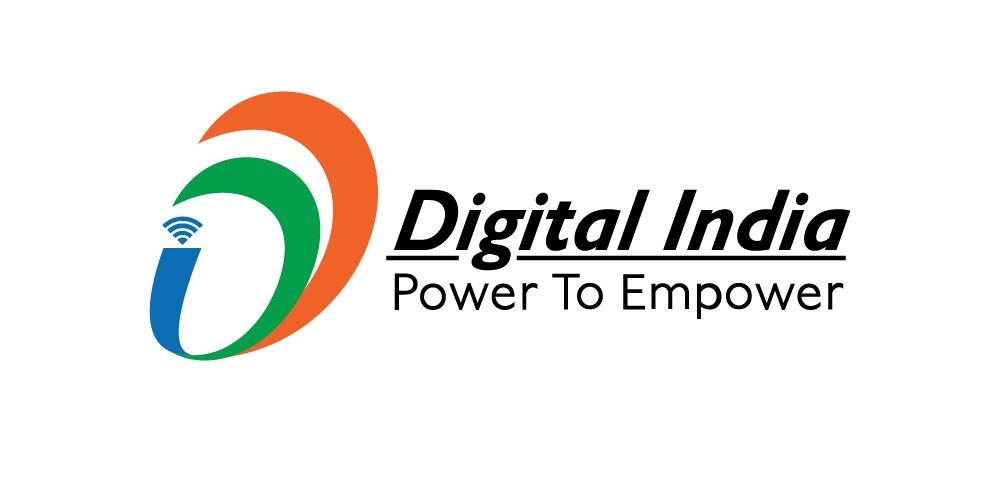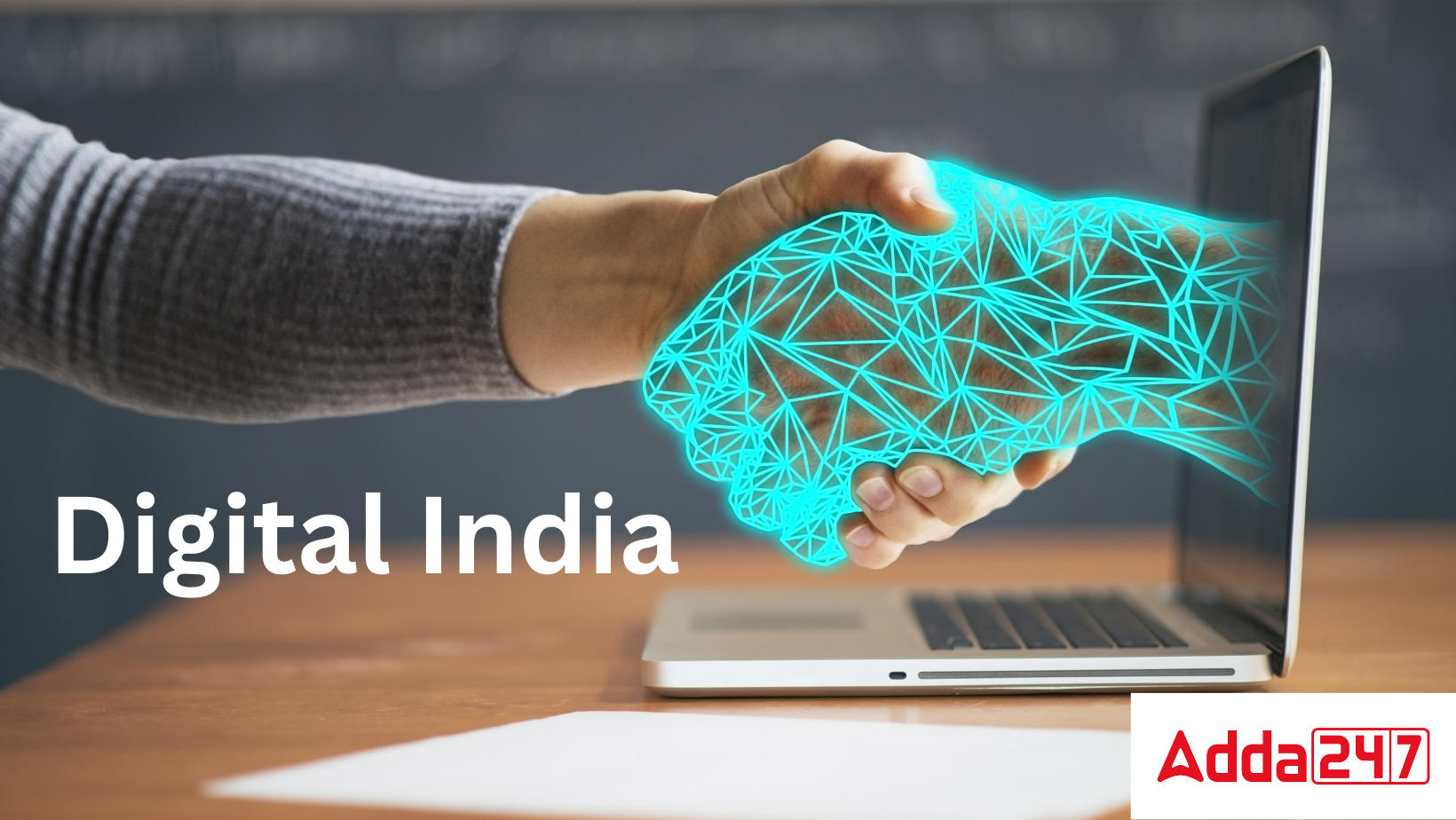Table of Contents
Digital India
The Indian Government launched the Digital India campaign to make government services available to citizens of the country digitally by improving online infrastructure and increasing internet connectivity and usage. The Digital India campaign also aims to empower the country digitally from a technology perspective. The Digital India campaign was launched by Prime Minister of India Narendra Modi on July 1st, 2015.
Must read: Start-up India
Digital India Portal
Digital India is a fantastic effort of the Indian government, as we are all aware. A gateway for related service providers, Digital India provides e-governance services, extremely effective electronic payment systems, and services for regional utility and telecom companies. The central and state governments support this project, which is coordinated by the Department of Electronics and Information Technology (DietY).
Owners of this portal have years of experience working in the e-government services sector. The company forms business ties with infrastructure suppliers, financial institutions, networks of merchants and consumers, and operators. It is crucial to India’s digitalization. Numerous services, including Pan cards, mobile and DTH recharge, electrical bills, ITR, and GST, are offered to the public by this webpage. Therefore, you must be registered on the Digital India Portal 2022 in order to receive the benefits. Continue reading this article to learn more about the registration process, the application card, and the certificate.
Digital India Week
Digital India Week 2022 was launched by Prime Minister Narendra Modi at the Mahatma Mandir in Gandhinagar, Gujarat. Catalyzing New India’s Techade is the focus of this year’s Digital India Week, which aims to convert the country into a knowledge-based society and economy. The three-day orientation session “India Stack Knowledge Exchange- Showcasing India Stack and India’s Digital Products and Services” for Digital India Week 2022 will begin on July 7.
Digital India Logo
The creator of the logo is a person named Rana Bhowmik. The idea behind the Digital India mission’s design was to reflect India’s culture, the speed of the digital age, and the new generation. The national flag’s colours and the letters D and I are successfully combined in the logo.

Digital India Campaign Overview
Some key highlights of the Digital India campaign are given in this table
| Date of launching | 1st July 2015 |
| Government Ministry | Ministry of Electronics and Information Technology, Finance Ministry |
| Launched by | PM Narendra Modi |
| Minister of E&IT (As of December 2021) | Shri Ashwini Vaishnaw |
| Official website | https://digitalindia.gov.in/ |
What is Digital India?
The Government of India launched the “Digital India” program to bring fast internet to rural areas. On July 1, 2015, Prime Minister Narendra Modi introduced the Digital India Mission as a beneficiary of other government initiatives like Make in India, Bharatmala, Sagarmala, Startup India, BharatNet, and Standup India.
Three areas are primarily the focus of the Digital India Mission:
- Providing every citizen access to digital infrastructure as a source of utility
- On-demand services and governance.
- To take care of each citizen’s digital empowerment.
With the goal of fostering inclusive growth in the fields of electronic services, goods, manufacturing, and employment prospects, Digital India was founded.
The nine facilities of growth areas are intended to receive the much-needed boost from Digital India. Each of these topics involves numerous Ministries and Departments and is a complicated program in and of itself.
Must read: UPI Full Form
Digital India Platform
The Government of India launched the Digitize India Platform (DIP) as part of the Digital India Programme to offer organizations of all sizes digitization services for scanned document images or physical documents. The goal is to digitally transform all currently existing content into usable forms across various media, languages, and formats. Additionally, data extracts will be produced for document management, IT systems, and records management.
Digital India: Facilities
- National Information Infrastructure, Broadband for All – Urban, and Broadband Highways are the three subcomponents that make up the term “Broadband Highways” (NII).
- Universal Access to Mobile Connection: This programme aims to close the country’s connectivity gaps and penetrate more networks.
Common Services Centers (CSCs) and Post Offices as multi-service centres are the two sub components of the Public Internet Access Program. - e-Government: Streamlining Government Procedures with Technology It is essential for transformation to improve the delivery of government services across all government domains, hence all Ministries/Departments must implement re-engineering utilising IT to streamline and make the processes more efficient.
- Improve the delivery of public services and make it easier to access them via e-Kranti, the electronic delivery of services. In order to usher in the era of e-Government, many State Governments and Central Ministries have launched a number of e-governance initiatives. In India, e-Governance has rapidly advanced from projects that merely computerised government departments to those that embody the finer nuances of governance, like people centricity, service orientation, and transparency.
- All Information – This pillar seeks to guarantee the openness and accessibility of trustworthy data produced by the line ministries for usage, reuse, and redistribution for the Indian people.
- Electronics Manufacturing: The goal of this pillar is to encourage domestic electronic manufacturing.
- IT for Jobs is a pillar that focuses on teaching young people the skills they need to be able to get employment in the IT/ITES sector.
- Early Harvest Programmes: This pillar comprises of a variety of short-term initiatives that have an immediate impact on the Indian digital ecosystem, such as crowdsourcing for eGreetings, biometric attendance in public buildings, WiFi in all universities, and IT platforms for mass communications.
Read also: Indian Army Chief List From 1947-2022
Objectives of Digital India
“Power to Empower” is the motto of the Digital India Mission. The Digital India plan has three main pillars. They are the development of digital infrastructure, the delivery of services digitally, and digital literacy.
The following is a list of this initiative’s main goals:
- To make high-speed internet available in every gramme panchayat.
- To make Common Service Center (CSC) accessible to everyone in the area.
- In order for each of these concepts and thoughts to be understood as a component of a bigger aim, the initiative known as “Digital India” brings them all together into a single, holistic vision.
The Digital India Programme also emphasises reorganising numerous current programmes that can be put into action in unison.
Also Know: 11 Fundamental Duties of India
Digital India: Advantages
The Digital India Initiative is a programme that includes ideas for establishing fast internet connections in rural areas of the nation. One of the nine pillars of digital India is the Public Internet Access Programme. India is one of the top two countries in the world for digital adoption, and by 2022, its digital economy is expected to reach $1 trillion.
Some of the advantages of Digital India are given below:
- There is an increase in e-governance-related electronic transactions.
- Under the Bharat Net programme, a 2, 74,246 km optical fibre network has connected more than 1.15 lakh Gram Panchayats.
- The Indian government’s National e-Governance Project established a Common Service Center (CSC), which offers access to information and communication technology (ICT). The CSCs offer multimedia content relating to e-governance, education, health, telemedicine, entertainment, and other public and private services via computer and Internet access.
- Creation of digital communities with modern amenities like Wi-Fi choupals, solar lighting, LED assembly lines, and sanitary product manufacturing facilities.
- The utilisation of internet data as a primary tool for service delivery has increased to 64% in metropolitan areas.
Nischay Batch for Class 10 Preparation Online Live Classes by Adda247
Digital India: Challenges
Through the Digital India Mission, the Indian government has taken steps to connect the nation’s rural areas to high-speed internet networks. In addition to the numerous projects that Digital India has undertaken, it also faces a number of difficulties.
Some of the challenges in Digital India are:
- In comparison to other industrialised countries, both the everyday internet speed and the Wi-Fi hotspots are slow.
- The majority of small and medium-sized businesses struggle greatly with modern technology adaptation.
- Entry-level handsets’ limited capacity to access the internet quickly.
- Manpower shortage in the area of digital technology.
Download the ADDA247 APP for your complete Exam Preparation, Free Tests & many more: Adda247
Digital India: FAQs
Que. What is meant by Digital India?
Ans. Digital India is a flagship program of the Government of India with a vision to transform India into a digitally empowered society and knowledge economy.
Que. Is Digital India successful?
Ans. Yes, this campaign has made the country digitally empowered in the area of technology.
Que. Who introduced Digital India?
Ans. Digital India was introduced by the Prime Minister of India, Mr. Narendra Modi.
Que. What are the examples of Digital India?
Ans. Some of the facilities which will be provided through this initiative are Bharat, digital locker, e-education, e-health, e-sign, e-shopping and the National Scholarship Portal.
Que. What is the aim of Digital India?
Ans. The Digital India program itself promises to transform India into a digitally empowered society by focusing on digital literacy, digital resources, and collaborative digital platforms.



 UK Board Result 2025 Link Live for Class...
UK Board Result 2025 Link Live for Class...
 JEE Main Rank Wise Colleges List 2025, C...
JEE Main Rank Wise Colleges List 2025, C...
 UK, UP, MP, CBSE Board Result 2025 Live ...
UK, UP, MP, CBSE Board Result 2025 Live ...










